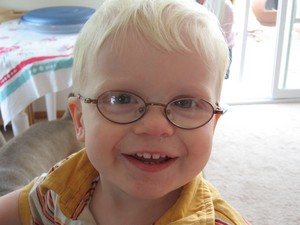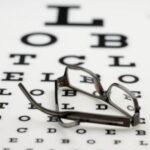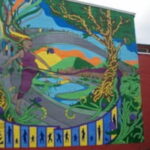Albinism is a group of inherited disorders most commonly characterized by unusually fair hair and skin at birth.
Because eye development is severely affected by albinism, it is important to obtain a diagnosis quickly, so that therapy and help can be established for the baby. Eye development is also the most obvious sign that your baby may need evaluated for albinism.
But how do you know what to look for, if no other family members have albinism, and blond hair, even very blond hair, is present in other family members?
Below are three signs that your baby may need evaluated for albinism.
1. Behind On Eye Development
Babies are not born with perfectly functioning eyes, so an inability to focus on objects is not an immediate cause for worry. When my son turned four months old, however, and still could not focus on toys, faces, or his little hand, I became concerned. I smiled when strangers commented that he loved to “look around” but I had the feeling the rhythmic, horizontal eye movement was not completely natural.
This involuntary, rhythmic eye movement is actually nystagmus, and is a result of underdevelopment of the eye muscles and central retina, which is due directly to the lack of melanin pigment, a chemical that both colors the eyes and skin, and is crucial for proper eye development.
If, at three to four months old, your baby has not begun focusing and holding his gaze on objects, contact your pediatrician to ascertain if further action is necessary.
2. Baby Develops a Head Tilt When Trying to Focus on Objects
Individuals with nystagmus or the low vision that accompanies albinism, may develop a “sweet spot”, or specific head tilt or position, when focusing on an object. For someone with nystagmus, this tilt is the point at which their eyes move the least, allowing them to focus on the object in front of them.
For people with low, or poor, vision, this is the point at which their vision is clearest. This is a compensation mechanism and may show that the baby or toddler would be helped by glasses.
3. The Fairest of All
If your baby’s hair and complexion are completely out of synch with the rest of the family tree, on the light side, then you may, even without eye problems, want to have him or her checked for albinism.
The first words out of our doctor’s mouth were “Look at that hair!”, in spite of the fact that I’d just given birth to an eleven pound, 7 ounce baby (he looked like he was three months old).
My husband and I dismissed the comment since I have two brothers that are blond, but the statement proved to be prophetic.
Albinism most often results from a baby inheriting a recessive gene for the condition from each parent. In our family’s case, no albinism is present on either side, so when we eventually pursued the diagnosis, it was a shock.
We waited until our son was nearly a year old to begin to help his vision, but babies are often put in glasses or given special therapies at a much younger age, since seeing is such an important part of all development.
If any of the above three signs occur in your baby, ask a pediatrician for advice regarding albinism.




